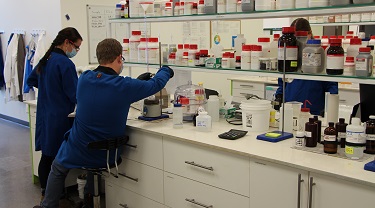We’ve all gone car crazy! Who would have thought? There’s so much more to worry about during the pandemic than our wheels, but go figure—this big-ticket item has consistently been in hot demand. Why this, why now, and what does it say about the economy in general?
Sales were strong before any of us had heard of COVID-19: In 2019, U.S. light vehicle sales clocked in at 17 million units for the fifth successive year. The post-financial crisis car carnage was disappearing from the rear-view mirror. The pandemic hit, and instantly sales were cut in half. After a partial rebound, things were soaring again in the second half of 2020. The blistering pace was maintained through mid-2021, with sales actually hitting 18.5 million units in April. Same trends in Canada.
Why the mid-pandemic frenzy?
- In general, we weren’t hurting for cash. Most people hung on to their jobs and their pay, but had far less to spend on.
- We were collectively reduced to pretty much one mode of transportation. Air was a non-starter, cruise ships were shunned, public transport of all kinds was reduced to a bare minimum during and after lockdowns. Personal travel—whether to the grocery store or across the country—was basically it. This didn’t just affect light vehicle sales; there was a run on recreational vehicles, too.
- Production also rode the roller-coaster, and it was a much rougher experience. Plants shut down completely across North America, dropping production close to zero in May. This would be a crisis for most industries, but autos and parts have a playbook for shutdowns, as retoolings and model changeovers result in regular annual closures, which are co-ordinated across model or platform supply chains. True to form, when the green light flashed, the sector came back faster than any other.
Selling prices of new and used vehicles remain strong. My dealership has sent multiple letters promising to pay 10% more than market for my 10-year-old sedan that’s closing in on a 200,000 odometer. And they would probably pay more.
But there’s something going on: Sales have crashed lately, and right across the board, in spite of North American economies that are largely open for business—and it’s not because of some other pandemic-related health factor.
You should also check out
Get the answers you need to make informed business decisions
Everyone knows that you just can’t get supply. That’s the rub: In the U.S., inventories are down 80%. Auto companies are scrambling to keep inventories up. Stateside, they aim for 60 days’ supply as a normal sales lot inventory. Right now, it’s just 24 days. That’s not even as long as a monthly shipping cycle, so sellers are close to running out every month. You just can’t get your hands on a car these days.
That sounds like pent-up demand at a mind-numbing level. Talk to leaders in the auto sector, and they’ll go straight to the semiconductor situation. Vehicles are being produced, but they can’t be finished because the chips needed to drive the electronic features are in critically short supply. Inventories are there—but the vehicles are incomplete, and sitting in lots awaiting those chips. Producers are starting to worry about the size of these stranded inventories, and are dialing down production. They know they can ultimately sell vehicles, but the question of the day is, when?
That has everything to do with when chip supply will normalize. Some say mid-2022, others say that it might be as much as 18 months. Intuition suggests it will be sooner rather than later. The Europeans and Americans are trying to fast-track new plants to secure supplies for the future and prevent this from happening again. Established chipmakers are making bundles on today’s higher-priced chips, but they definitely don’t want massive entry into global production. That’s a powerful incentive to up production by as much and as immediately as they can.
For now, demand appears solid and has solid fundamentals—meaning that when things open up again, sales will be strong. In the meantime, it’s a waiting game.
The bottom line?
North Americans love cars, and we want more of them. I’m convinced we’re ready to open our wallets when they’re available. And it seems that the incentives are lined up to clear the logjam sooner than the pessimists believe. Maybe when we get to that point and satisfying pent-up demand becomes the big task, we’ll doff some of the sector-specific protectionist talk that has surfaced again in recent days.
This commentary is presented for informational purposes only. It’s not intended to be a comprehensive or detailed statement on any subject and no representations or warranties, express or implied, are made as to its accuracy, timeliness or completeness. Nothing in this commentary is intended to provide financial, legal, accounting or tax advice nor should it be relied upon. EDC nor the author is liable whatsoever for any loss or damage caused by, or resulting from, any use of or any inaccuracies, errors or omissions in the information provided.








